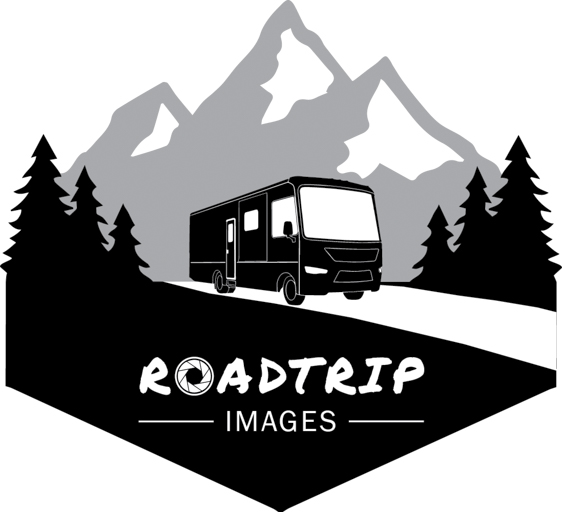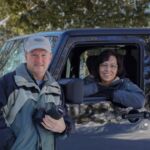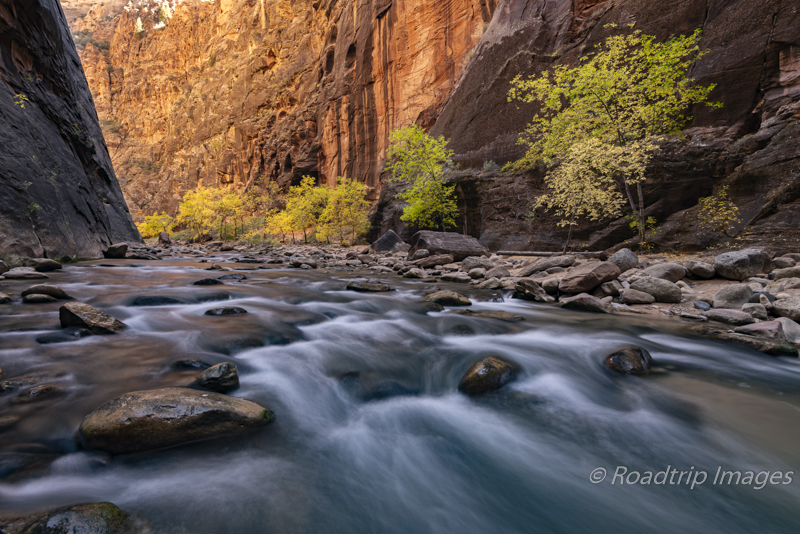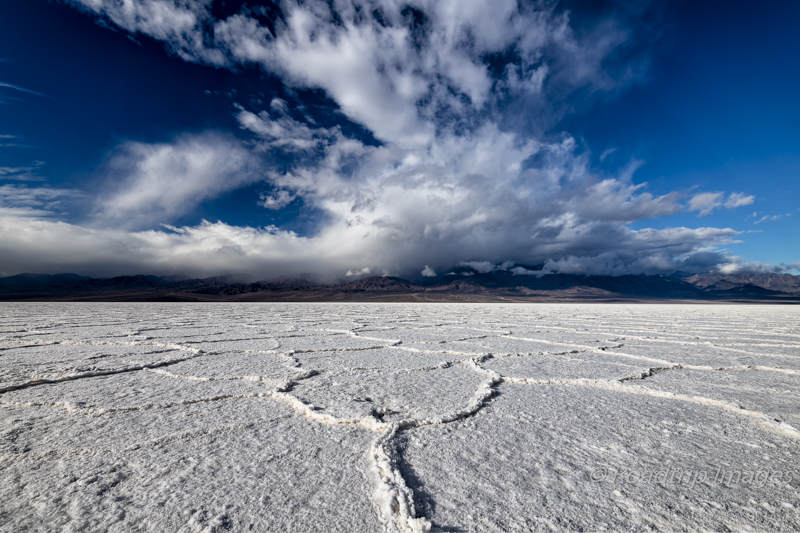Death Valley Mud Flats
Death Valley has many iconic locations for photography. One of the lesser known locations is the mud flats. They can be just as photogenic.
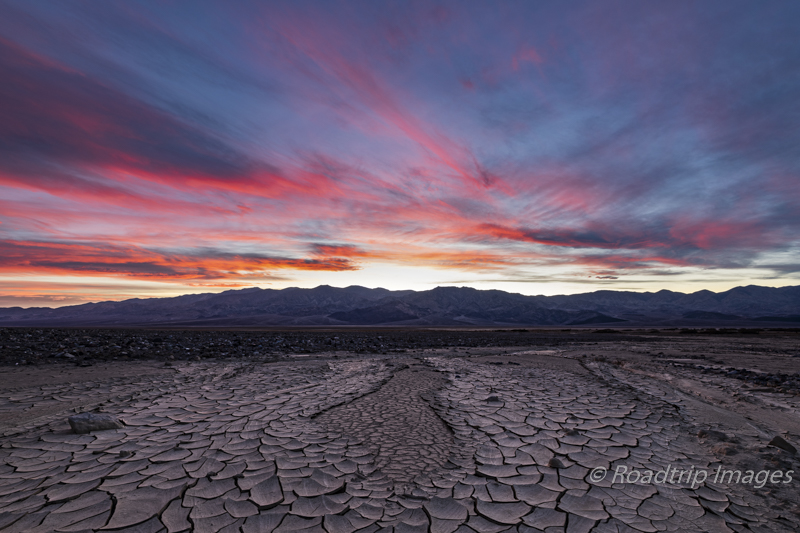
The Mud Flats
The Badwater area of Death Valley is home to the relatively famous salt flats. There is a large parking area there for tourists and it’s pretty busy during the day. Further north however lies another area that’s not listed in the Park literature. The Mud Flats. Many people have reported having difficulty finding these, probably since they are not marked on the maps. They are just a bit south of the Golden Canyon parking area on Badwater Road. Looking on Google Maps in satellite view you can see where the mud flows come down from the hillsides to the east and flow out into the flats whenever there are heavy rains. It doesn’t happen often but it does happen.
After the mud flows dry they tend to crack in the dry heat of the Death Valley summers. They get baked into almost pottery as the surface temperatures can reach 200 degrees F. The resulting patterns and leading lines create lots of foreground interest for photographers. We found these flats last year. I created a post of that visit as well. You can find it here.
Setting Things Up
On this visit I wanted to find an area with mud cracks that had a more dished out shape to them. The thicker mudflows stay pretty flat as they dry and crack. The thinner ones tend to warp as they dry and form a bowl shape. Lot’s more character and texture to these. It didn’t take too long before we happened upon some nice sections of these concave shaped mud cracks. Then it was a matter of finding something that also formed a leading line. Preferably leading out to the west and the mountain range.
I found an area that had these two mud flows with a void between them. All three areas were flowing right where I wanted. This was it. I knew I would want to get pretty low to emphasize the foreground so I set up the tripod and splayed the legs out pretty far. This got me lower and also provided a more stable platform. I included some near foreground just behind the point where the two mud flows separated and the void began. I balanced that foreground with enough of the sky since the clouds looked favorable for sunset color.
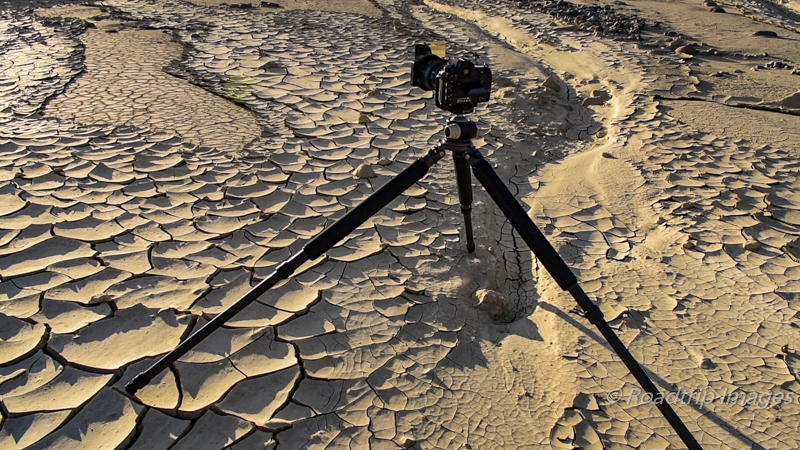
Making the Photograph
I was actually looking for two distinct photos with this setup. First I wanted to capture the sunburst as the sun touched the top of the Panamint Mountain range in the background. Second I was hoping there would still be enough clouds to give us a colorful sunset after the sun dipped below the horizon. To get the first image I added a 4 stop neutral grad filter on the lens to reduce the sky value. It was a soft edge filter and I placed the transition line right on the mountains themselves. When the sun got close to the mountains I started making exposures. There was quite a bit of lens flare present but I decided to leave that in this time. There is a technique to eliminate that flare that I described in this post here. I’ve included the sunburst image below.
For the sunset image at the top of this post, it almost didn’t happen. We had a moderately good sunset earlier and then it faded so it looked like that was it. We were getting ready to pack things up when I noticed some new color developing in the southern sky. “Where was that coming from?” we asked. Color from sunsets generally starts in the east and rotates around to the west as the sun sinks lower so we waited to see what was going to happen. Low and behold the sky began to light up with rich pink and red color. All the way around. It was one of those sunsets that only comes around once in a great while. Thankfully my camera was still set up so I kept shooting. I removed the 4 stop neutral grad filter by this time since the sky values were far lower than before. It turned out to be a very memorable event. One that makes you glad you were outside to witness it.
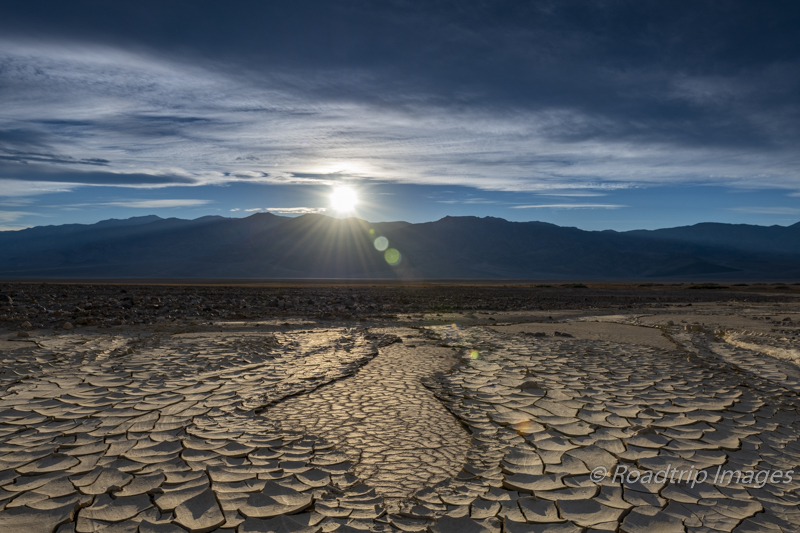
Final Thoughts
Death Valley is a beautiful place to photograph – in the winter. Don’t come here in the summer, it’s way too hot. It’s name is unfortunate as it’s really a wonderful Park with tons of different environments to shoot in. Salt flats, mud flats, sand dunes, mountains, you name it. Lot’s of rich color in the landscape as well. As with most any landscape, weather transitions tend to be the best times to shoot. Forming or clearing storms especially.
This is a place we’ll keep coming back to both for the winter weather as well as the scenery. There’s enough here to keep coming back for years.
The featured image is available as a free wallpaper download. See the Shop page for more info.
Nikon D850 with Nikkor 16-35mm at 16mm. f/11 at 1 second. ISO 64.
Subscribe and Get Free E-Book!
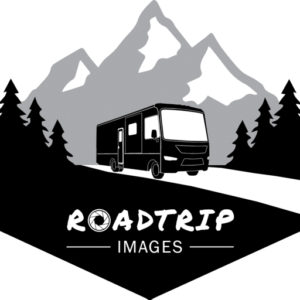
Our video on the Death Valley Mud Flats
